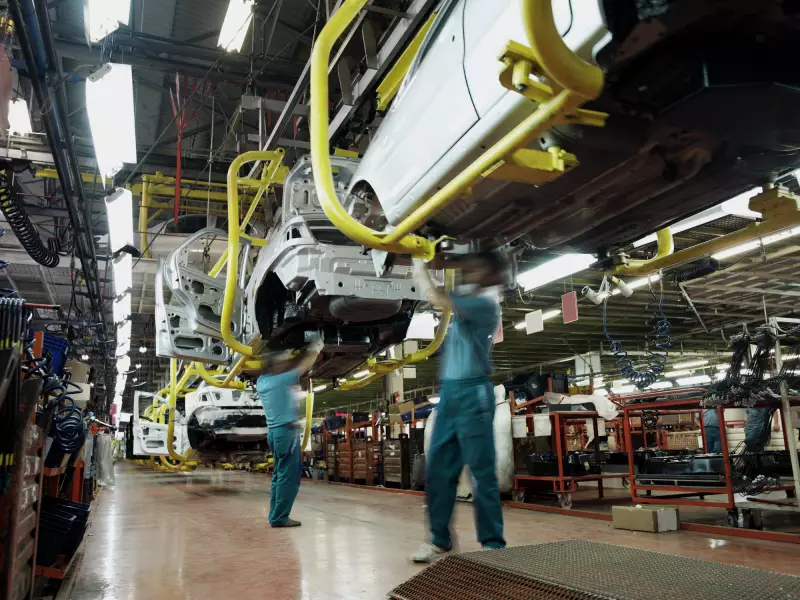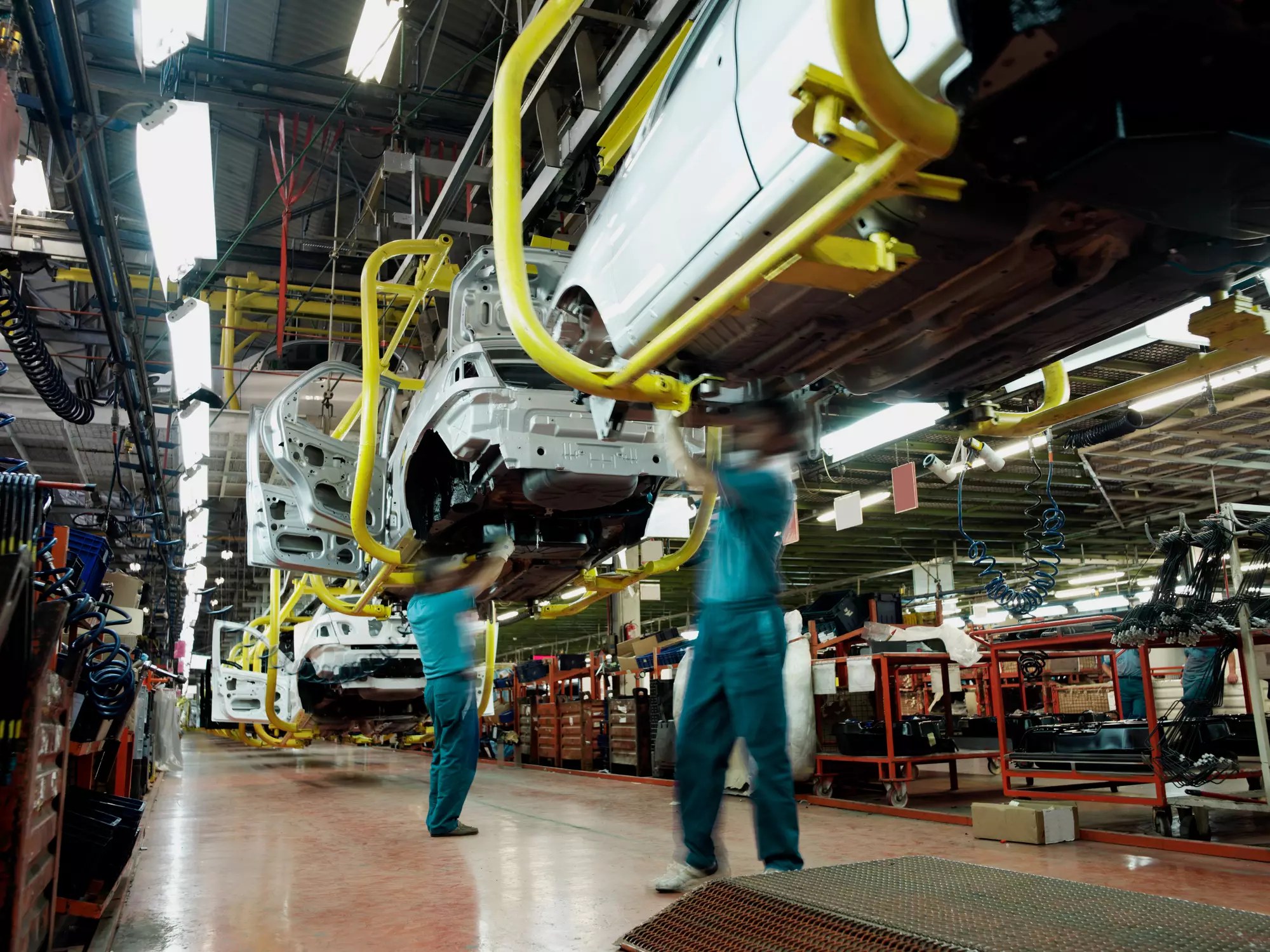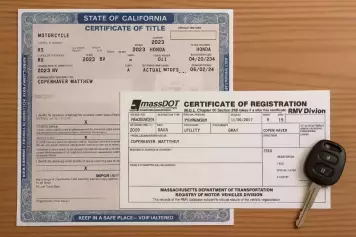Knowing where your car was made goes beyond mere curiosity; it can impact your ownership experience in meaningful ways. A vehicle’s origin often reflects its build quality – this, in turn, can influence purchasing decisions, especially for buyers who prefer cars manufactured in countries known for automotive excellence, strict production standards, and quality control.
Additionally, import taxes and duties often vary based on origin, affecting the total cost. Likewise, some buyers may prefer cars from specific regions, while others may want to support domestic manufacturing. Whatever the reason, answering the question “where was my car made?” is usually much easier than it may seem.

How To Tell Where Your Car Was Made Using the VIN
Every car usually has a unique 17-character code known as its Vehicle Identification Number (cars manufactured before 1981 may have fewer or more than 17 characters). This vehicle identification number, or VIN for short, is encoded with key details about the car and is usually the most reliable and accurate way to determine where it was built.
Locate the VIN on Your Vehicle
To determine where your car was made using its VIN, the first step is to locate the VIN itself. VINs are typically displayed in several locations on the car, including:
- On the dashboard, near the windshield on the driver’s side (viewable from outside the car)
- On a sticker or metal plate on the driver's side door jamb
- On the car’s engine block or radiator support
If you cannot find the VIN at these locations, you may check your owner’s manual to see if it lists where the VIN for your specific model is displayed. In some cases, the VIN may also be printed on the vehicle registration and insurance cards.
Decode the First Character of the VIN
Once you have located the VIN, the next step is decoding it to figure out where the car was built. This information is usually indicated in the first character of the VIN. Here is a quick reference:
- 1,4,5 = United States
- 2 = Canada
- 3 = Mexico
- 6 = Australia
- 7 = New Zealand
- 8,9 = South America
- A – H = Africa
- J – R = Asia
- J = Japan
- K = South Korea
- L = China
- S – Z = Europe
- S = United Kingdom
- V = France or Spain
- W = Germany
- Y = Sweden or Finland
- Z = Italy
For instance, a VIN that starts with “1” indicates the car was made in the U.S., while “W” suggests German origin. This gives you a solid starting point to understand your car’s origin. However, keep in mind that this only shows the car’s manufacturing location, not necessarily where every component was produced.
Review the Manufacturer’s Label
Another easy way to answer the question “Where was my car built?” is by checking the manufacturer’s label. This label is usually located inside the driver-side door frame and typically indicates the vehicle’s country of assembly, as well as details like its production date, weight rating, tire specs, and other manufacturing-related data.
This label is helpful because it confirms the car’s actual assembly location, which is often the same country indicated by the first VIN character (as such, it is often used to cross-reference and confirm the accuracy of VIN data). Note that a car’s final assembly location may sometimes be different from where the manufacturer is headquartered. For instance, a Toyota might be assembled in the U.S. even though it’s a Japanese brand.
Check the Owner’s Manual or Warranty Booklet
Some automakers include information about the vehicle’s manufacturing or assembly plant in their owner’s manual or warranty booklet. While this isn’t always a guaranteed way to find out where the car was built, it’s still worth checking out, especially if you do not have access to the VIN or manufacturer’s label at the moment. If you're buying a used car, these documents might also give you clues about whether the vehicle was imported or part of a domestic production batch.

Use Online VIN Decoder Tools
VIN decoder tools are another option for getting detailed information about your vehicle. These tools generally pull information from global manufacturing databases and other publicly available sources using either a full or partial VIN. The collated data is then used to generate a report that may contain information like the vehicle’s country of manufacture, manufacturer and brand, make, model, and year, trim level, and engine and transmission info.
There are several VIN decoder tools available for use online, such as the NHTSA’s VIN Decoder system, the NACB’s VINCheck service, and GoodCar’s VIN Decoder tool. Many of these tools are usually offered at no cost (however, a nominal fee may be charged for more detailed reports).
Contact the Manufacturer or Dealership
You may also consider contacting your car’s manufacturer or a certified auto dealership near you that is affiliated with the vehicle brand to find out where your car was built. They can typically answer questions about the car’s manufacturing origins and also provide other pertinent information. Note that you may be required to provide your VIN (or any other details deemed necessary by the automaker or dealership).
Global Manufacturing Practices
While cars once used to be manufactured in a single location, modern car manufacturing has become a globalized process, with components sourced from multiple countries and final assembly often taking place in different regions. However, this complexity sometimes makes it harder for the average buyer to pin down a car’s “true” origin, highlighting the importance of understanding certain approaches used in identifying and interpreting a car’s manufacturing origins:
- Country of Final Assembly: This usually refers to where the car was assembled, not necessarily where the brand is based, and may be deciphered using the first character of the car’s VIN. For instance, if a Mercedes GLE’s VIN begins with the number “4,” it means that the car was built in the U.S., even though Mercedes is a German brand.
- Domestic vs. Import: certain buyers are influenced by a car’s origin, with some preferring imported vehicles to locally manufactured (domestic) ones, and vice versa. Per the American Automobile Labeling Act (AALA), a vehicle is considered to be domestic if at least 85% of its parts come from the U.S. or Canada. Note that certain other contexts may determine if a car is considered domestic or imported. For instance, with regards to fuel efficiency rules, the EPA considers a vehicle to be domestic if at least 75% of its parts are made in North America (U.S., Canada, or Mexico). Likewise, for import taxes, the U.S. Department of the Treasury sees a vehicle as domestic if at least 50% of its content comes from the U.S. or Canada. On the other hand, in Europe, a car’s origin usually depends on where final assembly occurred – for example, a Ford made in Germany is considered European.
- Brand Nationality vs. Manufacturing Location: In this instance, the car’s origin is interpreted using its brand nationality instead of where it was built. For instance, a Toyota may be considered a Japanese car even if it was made in the U.S., while an "American" Ford might have been assembled in Mexico.
Difference Between Manufacturing and Assembly
When it comes to building cars, there are three key processes involved:
- Design: This refers to the planning stage where the car’s look, structure, and features are conceptualized. A car may be designed in one or several locations, without being built in any of them.
- Manufacturing: This refers to the process of creating individual vehicle parts, like engines, transmissions, and body panels. This may be done in different locations around the world.
- Assembly: This refers to the process of putting the manufactured parts together into a functioning vehicle, usually at one central plant. In most cases, this location is considered the car’s official origin.
When determining where your car was made, it is important to distinguish between these phases, as a "Made in X" label on the car may not always reflect the origin of all the components. For example, a car could have been designed in the U.S., have its engine made in Germany, its electronics produced in South Korea, and final assembly completed in Mexico. In this case, the car might still legally be labeled “Made in Mexico” even though many of its parts came from other places.
Knowing where your car was made gives you deeper insight into its quality, value, and total cost. Whether you’re a first-time buyer, a car enthusiast, or just doing your due diligence, you can easily undertake this task using tools like the VIN, manufacturer labels, and online VIN decoders. In today’s world of global car production, a bit of extra knowledge goes a long way toward making a confident and well-informed decision








![Best Sites to Check a Car’s History [2025 Review]](https://media.infopay.net/thumbnails/K8lMeG2QLjE46LPqZlmoi6SunKKdT5qvlaRZk6e1.webp)










![Best Sites to Check a Car’s History [2025 Review]](https://media.infopay.net/thumbnails/K8lMeG2QLjE46LPqZlmoi6SunKKdT5qvlaRZk6e1-w356.webp)
